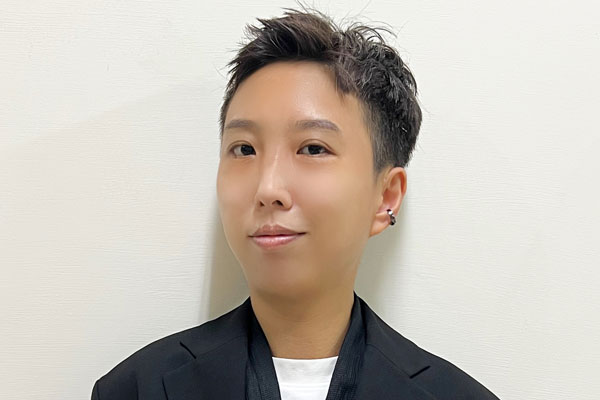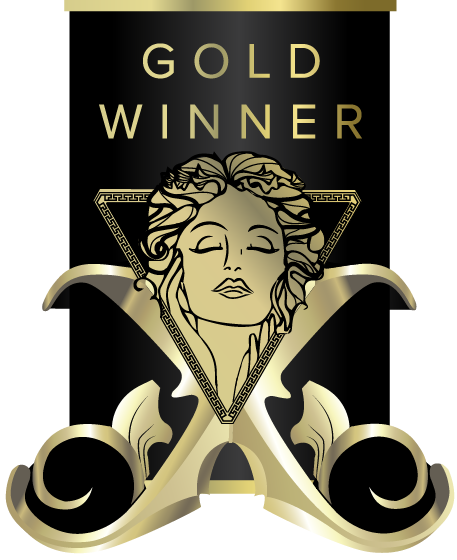
Interview
Chia Chia Lin
1 Congratulations on winning the MUSE Design Awards! Can you introduce yourself and share about what inspired you to pursue design as a career?
At first, I was drawn to the beauty of design—it felt enchanting and full of possibility. But as I went deeper, I became increasingly fascinated by how design can create real change and impact—not just visually, but emotionally and socially. The idea that design can improve lives, touch hearts, and even solve societal problems inspired me to fully dedicate myself to this path. Through my work, I hope to make the world a gentler and more empathetic place.
2 What does being recognized in the MUSE Design Awards mean to you?
To me, being recognized in the MUSE Design Awards is not only an honor but also a source of encouragement and a meaningful reminder. It affirms that the values and efforts I’ve been holding onto truly matter, and it gives me greater confidence to continue using design to convey warmth and create impact. At the same time, this recognition motivates me to keep growing and exploring new possibilities on my design journey.
3 How has this achievement impacted your career, team, or agency, and what opportunities has it brought so far?
At this stage, the recognition feels more like a source of encouragement than a dramatic change—but it has definitely boosted our team’s confidence and affirmed that we’re moving in a meaningful direction. While the impact is still unfolding, we’ve already started to notice increased attention from the industry and more opportunities for meaningful conversations. It’s also motivated us to take on deeper, more impactful design challenges.
4 What role does experimentation play in your creative process? Can you share an example?
Experimentation plays a crucial role in my creative process, as many unexpected yet meaningful ideas often emerge during moments of exploration. Rather than strictly following established frameworks or safe choices, I prefer to venture into unfamiliar combinations—whether it’s blending different materials, shifting perspectives, or reimagining interaction patterns. These trial-and-error moments often lead to insights that purely logical thinking alone could never uncover.
5 What's the most unusual source of inspiration you've ever drawn from for a project?
One of the most unusual sources of inspiration for me comes from the subtle feelings in everyday life. Sometimes it’s the warmth of a breeze, the quiet anxiety while waiting, or a moment of hesitation in someone’s eyes. These seemingly ordinary emotional fragments often move me unexpectedly and make me reflect on how design can capture, interpret, or respond to these delicate inner experiences.
6 What’s one thing you wish more people understood about the design process?
I wish more people understood that the essence of design isn’t about decoration or aesthetics—it’s about truly solving problems and fostering meaningful interactions between people and the world around them. Design should be human-centered, rooted in users’ needs and emotions, and shaped through thoughtful observation and iteration to create experiences that are genuinely impactful and compassionate.
7 How do you navigate the balance between meeting client expectations and staying true to your ideas?
I see design as a dialogue, not a one-sided expression. When working with clients, I try to understand what they truly care about—is it the visual style, user response, or business outcome? Once I identify the core need, I can reinterpret it through my design perspective, aiming to create solutions that meet their goals while staying true to my ideas. To me, the best results don’t come from compromise, but from discovering unexpected possibilities together.
8 What were the challenges you faced while working on your award-winning design, and how did you overcome them?
For me, the biggest challenge was creating a design that truly solves a problem and brings real meaning. It wasn’t just about aesthetic innovation—it was about deeply understanding people’s emotions and needs, and pushing forward without giving up until the design could genuinely make a difference for someone. Along the way, there were doubts, obstacles, and moments when I questioned if it was even possible. But I kept believing that if I didn’t give up, I would eventually find a way to create something that connects. That persistence and belief ultimately shaped this award-winning work.
9 How do you recharge your creativity when you hit a creative block?
When I hit a creative block, I don’t try to force my way through it. Instead, I take a step back from the design work. I might have a coffee, cuddle with my cat, enjoy some of my favorite food, or simply go for a walk and observe everyday life around me. Whether it’s watching people pass by or just noticing the small things on the street, these quiet moments help me reconnect with inspiration. Often, the best ideas come not through pressure, but through living and feeling life.
10 What personal values or experiences do you infuse into your designs?
I bring a deep sense of feeling, a love for design, and a personal understanding of the world into everything I create. To me, design is an active dialogue—it’s not just about quietly being there, but about responding thoughtfully to people’s emotions and needs. I hope my work can truly touch people, showing up at the right moments to offer support and strength. That kind of design—sensitive, intentional, and warm—is what I strive for.
11 What is an advice that you would you give to aspiring designers aiming for success?
My advice to aspiring designers is: “Be brave enough to dream.” Don’t be afraid if your ideas seem naïve or unrealistic—many of the designs that changed the world started with something that once felt impossible. On the design journey, self-doubt is inevitable, but if you remember why you started, you’ll find your own path and your own voice.
12 If you could collaborate with any designer, past or present, who would it be and why?
If I could collaborate with any designer, it would be Steve Jobs. Although he wasn’t a designer in the traditional sense, his design intuition, obsessive attention to detail, and deep understanding of the emotional connection between people and technology have profoundly influenced me. He showed that design isn’t just about aesthetics—it’s about transforming how people live. If I had the chance to work with him, I’d love to learn how he tells meaningful stories through design that starts from the essence.
13 What's one question you wish people would ask you about your work, and what's your answer?
I wish someone would ask me, “Who do you design for?” My answer would be: for the stars—the quiet, distant things that shine without needing a reason. Not to change them, but to get closer, to understand them, and to capture that soft yet enduring light through design.


